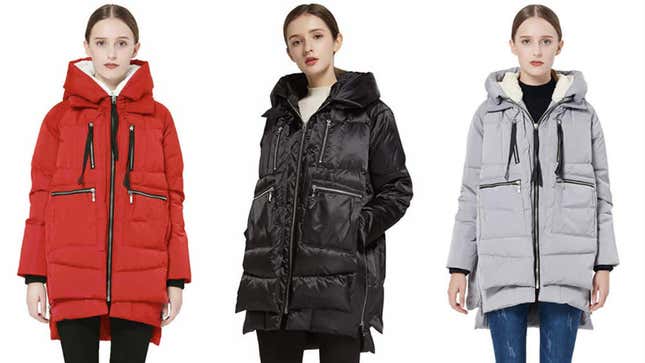If You Own The Amazon Coat, You Can Still Wear It
Latest

Last winter, New York Magazine’s e-commerce tastemaker blog The Strategist published an investigation into a particular jacket spotted on the Upper East Side. Dubbed the “Amazon Coat” for its unlikely provenance, it was written about far and wide, and eventually became ubiquitous to a certain subset of women who live in New York City and pay close attention to Twitter for work, pleasure, or a hideous combination of both. At the time, I saw a colleague cross the street in the coat and thrilled at how nice it looked in the wild. Eventually, I purchased the coat myself, reluctantly buying into the hype.
I was pleased to find that the coat met many of my requirements for a winter jacket: warm, not terrifically hideous, and long enough to cover my butt. Wearing the coat did not fill me with any particular angst or worry about slavishly following a trend. When I saw other women wearing the coat in New York, which did not happen nearly as often as the trend pieces would suggest, I had no adverse reaction. The coat did not shrink from my body in shame. I did not seek shelter in Uniqlo to self-flagellate while considering other jacket alternatives, desperate to scrub the essence of conformism off my flesh. Other women perhaps saw the value in the coat and, like me, made a smart decision by purchasing and wearing it until winter’s end. We were warm and, if assembled en masse, probably resembled an army of Off-White devotees wearing a thrice-removed knockoff of a street/sportswear hybrid, the original of which never truly existed. Simply put, we were comfortable and we were slouching towards a theory of utilitarian stylishness that was just neutral enough to be inoffensive.
As winter sort of begins, I have felt a thrill at the thought of wearing the coat again. But the backlash to the coat has quietly begun.
-

-

-

-

-

-

-

-

-

-

-

-

-

-

-

-

-

-

-

-

-

-

-

-

-

-

-

-

-

-

-

-

-

-

-

-

-

-

-

-








































